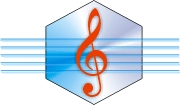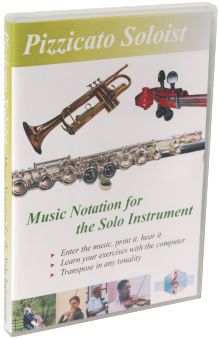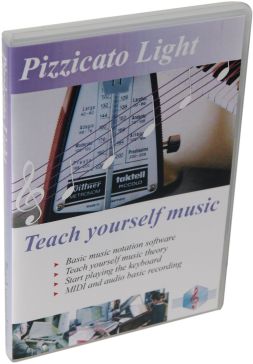Slurs and ties
Pizzicato has 2
types of ties. The first one is the tie (notes and rests tool palette)
used to tie two notes together, having the same pitch and showing
that the note is held and only played once. To introduce a tie,
select the tie tool (quarter note with a tie on the right) and
click on the first of the 2 notes. The tie is automatically
calculated by Pizzicato. Using the same tool, you can change its
direction and erase it (by clicking again on the first note). The
shortcut key is the "=" keyboard key, that you can use
while pointing the note with the mouse (without clicking). The slur is a
different type of tie. Its purpose is to group 2 or more notes.
It can include two or more notes of the same or different pitches.
If the notes have the same pitch, the second note will be played,
as opposed to the tie. The slur symbol is in the main symbol
palette, in form of a curve, up or down. When the tool is
selected, simply click on the first note of the group. The slur
appears in a standard size. You can than display the control
points with the marks tool (shortcut ":") to adapt the
size, the form of the curve and the slur position. The slur can
be created on several measures if necessary. In both cases,
Pizzicato plays the effect of the tie/slur. For slurs, by default
Pizzicato links the notes at 100 %, which means that the stop of
a note exactly corresponds to the beginning of the following note.
This default value is fixed by a parameter of the instruments
view, separately for each instrument. In the "Various
effects" configuration, the "Dur." (Duration)
column is place by default to 100 %. When you add a slur, you
force Pizzicato to play notes to 100% of their duration. If you
maintain the value by default in the instrument window, you will
not hear the difference with the notes which are not linked. To
get a contrast, fix the default value for example to 75%. All the
notes which are not bound will be played with a very little
staccato and the notes bound with a slur will play at 100%.

All rights reserved for all countries
Pizzicato is a trademark owned by Arpege sprl





























